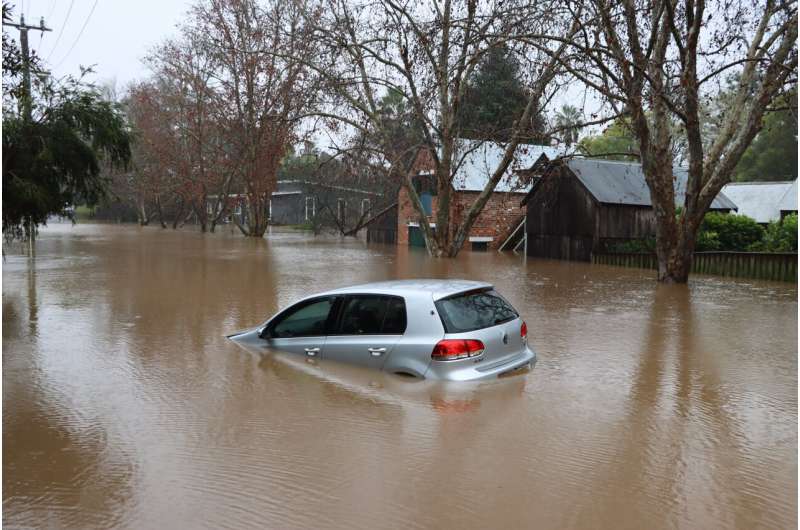How a slight change in weather could have made Germany's deadly floods even worse

Sadie Harley
scientific editor

Robert Egan
associate editor

The devastating floods that killed nearly 200 people in Germany four years ago could have been even more damaging, new research suggests. The floods in July 2021 were among the worst disasters in German history. At least 196 people died in Germany, 43 people died in Belgium and the total damage to Central Europe amounted to €46 billion.
The devastation of the floods was attributed to a climate change-driven shift in the jet stream that steered a huge storm that became "cut off" from trade winds, parking it for days over a region with already wet ground that then experienced months' worth of rain in just a few hours.
A new study, published in the journal Communications Earth & Environment, describes different ways in which the atmospheric conditions responsible for the floods could have played out. Researchers found that, while the floods were catastrophic, the impacts could have been even worse with small shifts to the atmospheric conditions adjusting rainfall characteristics.
The researchers say the results show the importance of considering plausible worse—scenarios in preparing for, and responding to, future flooding events.
Dr. Vikki Thompson, lead author at the Royal Netherlands Meteorological Institute (KNMI), said, "Even when we think we've experienced the worst possible flooding, nature might have other plans. Our research shows that the 2021 German floods could have been even more devastating with just small changes to the weather pattern.
"By understanding the full range of scenarios that could unfold, we can help authorities and communities better prepare for future extreme weather events that climate change is making more likely."
Testing different scenarios
The research team used computer models to make small changes to the atmospheric conditions in Northern Europe in early July 2021. They created different but plausible scenarios to question whether rainfall could have lasted longer, spread over larger areas, or fallen in different locations.
The scientists found that the same weather system could have persisted for four days instead of three. In such a scenario, rivers would have had no time to recede between rainfall periods, causing worse flooding downstream in major German cities like Cologne and Bonn.
The team also discovered that extreme rainfall could have spread across larger areas than occurred. While the real floods affected parts of western Germany, Belgium and the Netherlands, the models show rain could have covered areas equivalent to the size of Belgium—stretching emergency services across multiple countries simultaneously.
If the same weather system had shifted just slightly westward, densely populated cities like Maastricht in the Netherlands or Luxembourg could have faced the worst flooding instead of western Germany.
Without recent experience of such extreme flooding, government authorities and emergency services may have struggled in such circumstances. These areas may have been less prepared for such extreme rainfall because they had not experienced similar floods recently.
Professor Hannah Cloke, co-author from the University of Reading, said, "Climate change is making extreme rainfall events like the 2021 floods more frequent and intense. This research shows us that we need to imagine and prepare for scenarios beyond those that we've already experienced, because the next flood may still be worse."
More information: Alternative rainfall storylines for the Western European July 2021 floods from ensemble boosting, Communications Earth & Environment (2025).
Journal information: Communications Earth & Environment
Provided by University of Reading





















